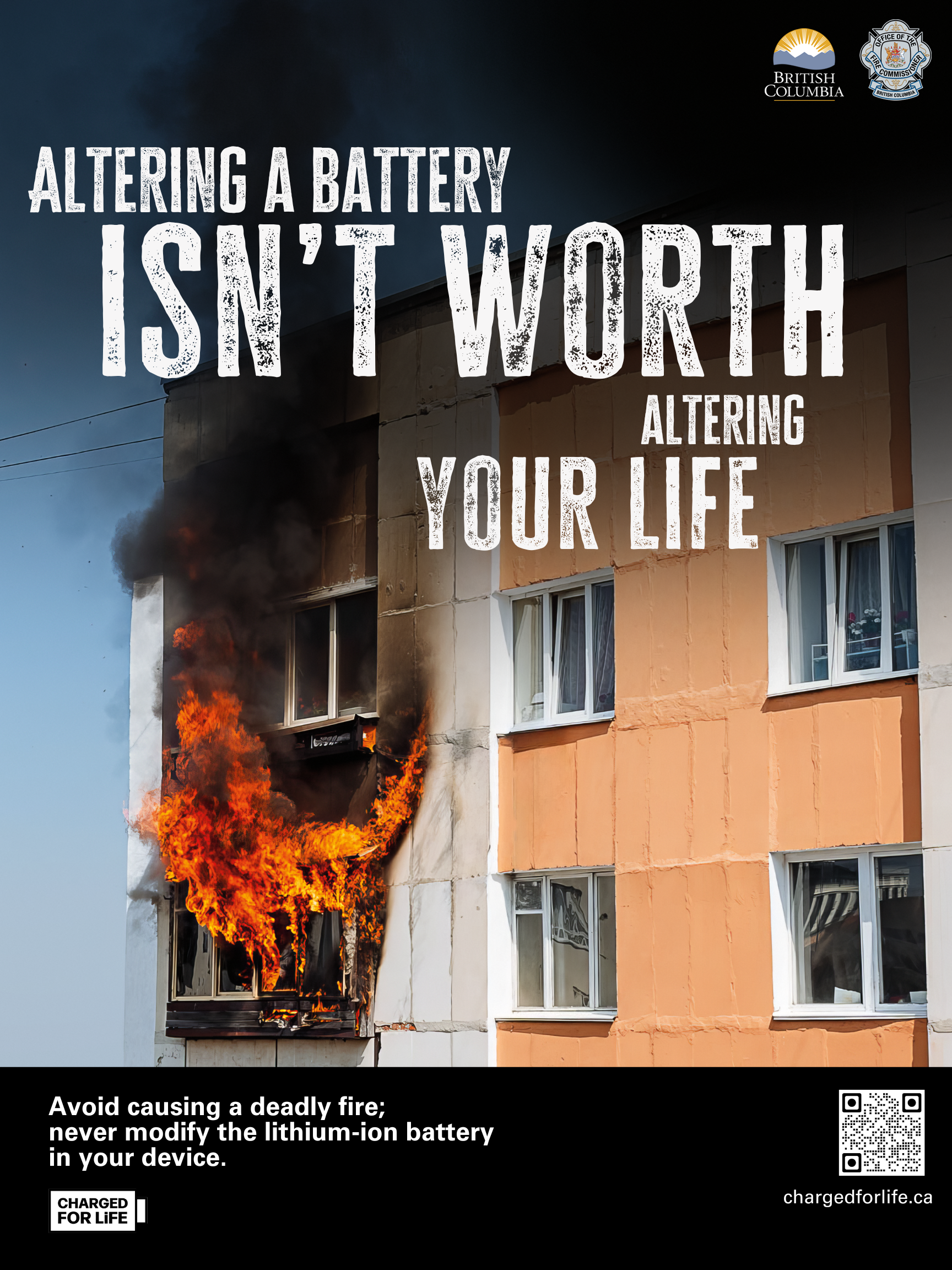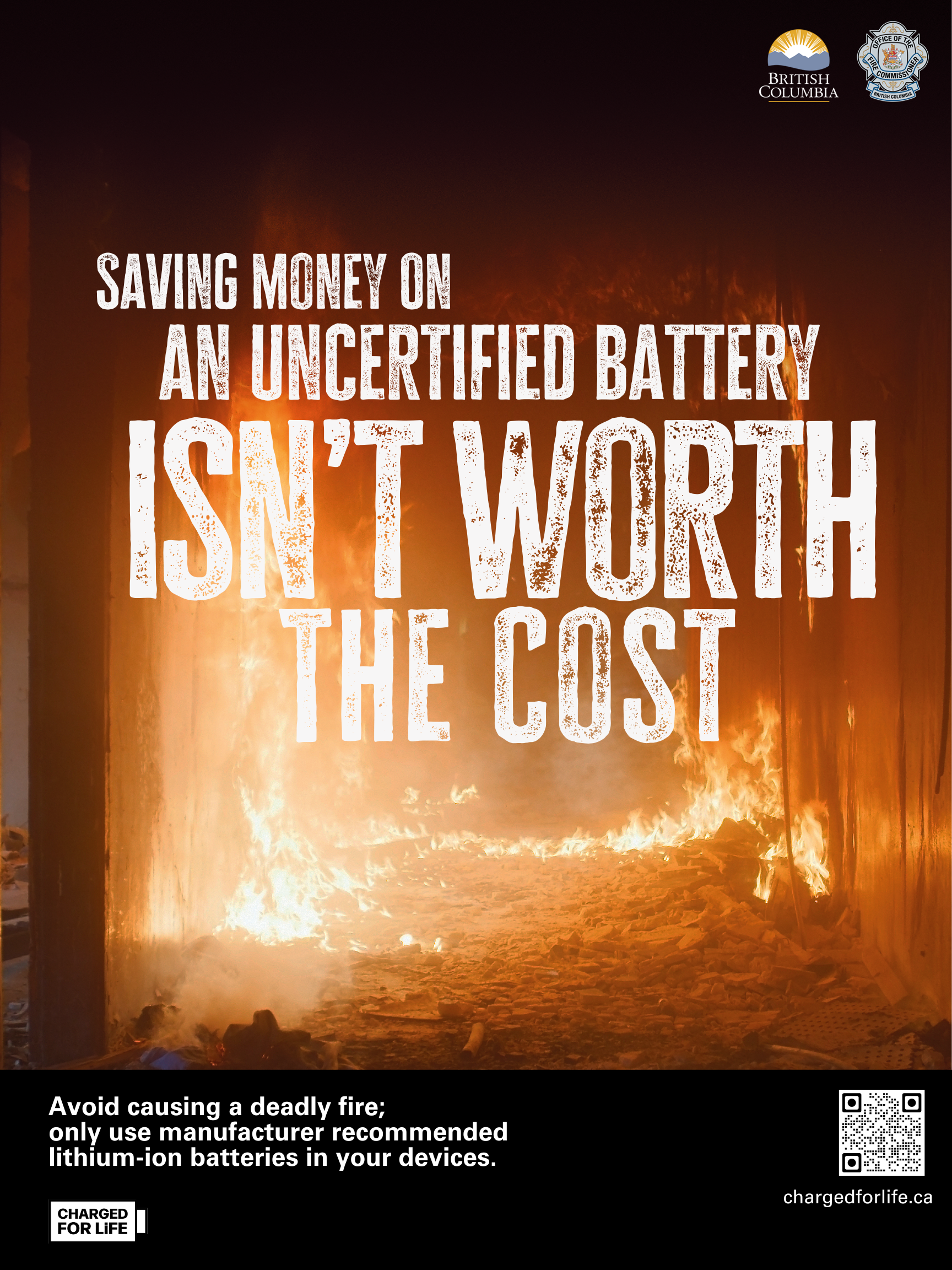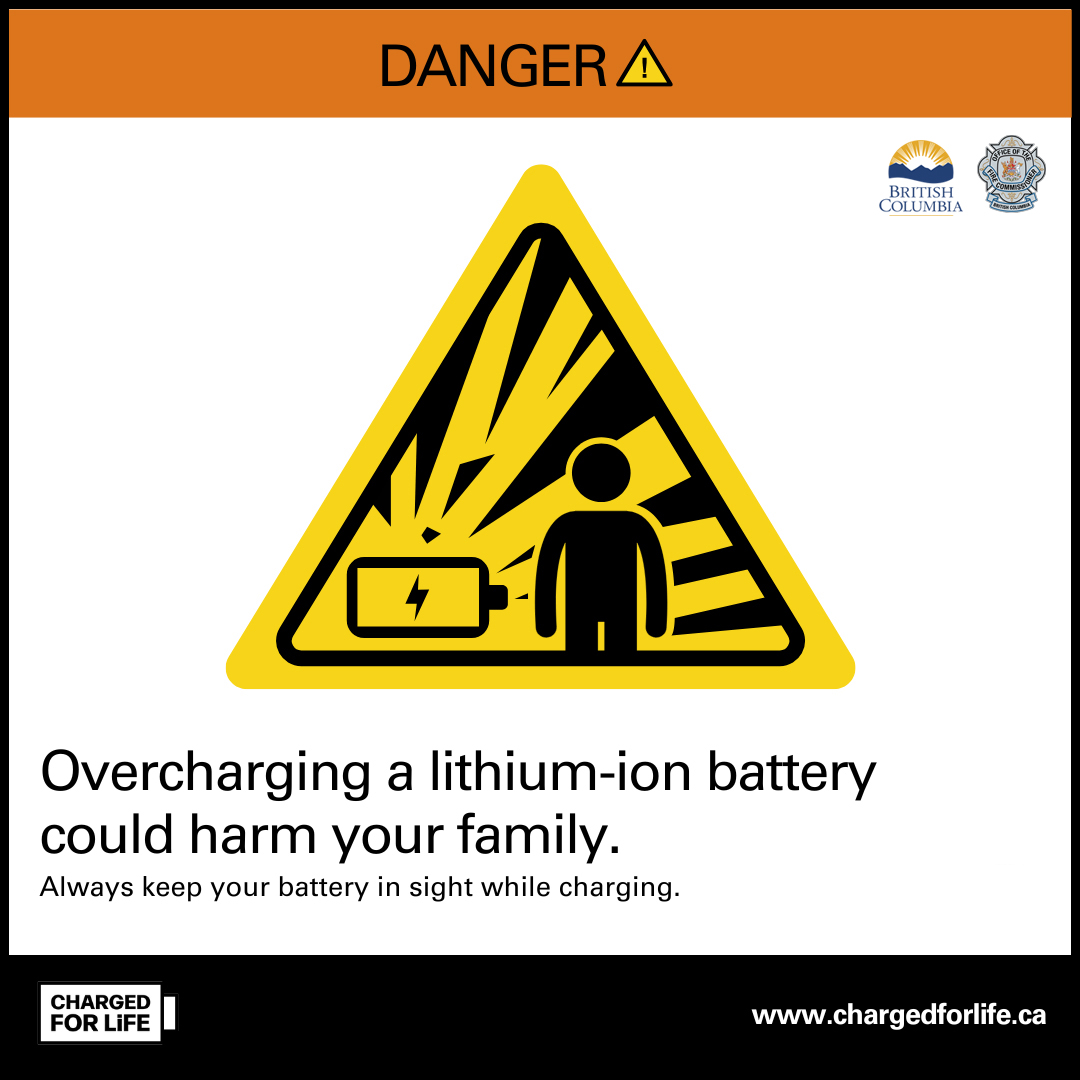Lithium-ion battery safety social media toolkit
Rechargeable lithium-ion batteries are used in many household electronics, tools and micromobility devices. These batteries store large amounts of energy, which can pose unique fire risks and firefighting challenges.
Safely using and charging these batteries and devices helps to reduce this risk. To safely dispose of old lithium-ion batteries, visit recycleyourbatteries.ca to learn where and how to recycle them.
Social media toolkit
How to use this toolkit
This content has been formatted to share as a social media post. You can copy this content or customize it.
Messages to share
- Lithium-ion batteries store large amounts of energy in a small space, and if damaged or used improperly they can catch fire or explode.
- Always follow manufacturer instructions when using and charging lithium-ion batteries.
- Only use the battery and charger that came with a device for that device.
- Do not charge devices with lithium-ion batteries on soft surfaces like a bed or couch.
- Avoid overcharging lithium-ion batteries, as this can reduce battery life or cause the battery to stop working.
- Remove e-cigarette batteries before putting the device in a pocket or bag.
- Stop using a lithium-ion battery if you notice:
- Odour
- Change in colour or shape
- Excess heat
- Leaking
- Odd noise
- Recycling used lithium-ion batteries is the best way to dispose of them. Do not put used batteries in the garbage or in piles.
Hashtags
#FireSafety #FirePrevention #BatterySafety #ChargedForLife
Graphics
Download and use the graphics below, either by themselves or add additional information to your post to reinforce the message.
Prevention and safety messaging
- Lithium-ion batteries are used to power many household devices, including phones, laptops, other electronics, tools, smoke alarms, children’s toys, e-cigarettes and micromobility devices like scooters and e-bikes. They store large amounts of energy in a small space and can overheat, catch fire or explode if overcharged, damaged or used improperly.
- When purchasing devices, look for those that are listed by a qualified testing laboratory. Purchase replacement batteries from the manufacturer or original product retailer.
- Charge devices using the cord they came with, and if you need to replace a charger look for one with a Canadian certification mark.
- Keep lithium-ion batteries at room temperature and don’t use them in damp or humid conditions. Do not keep batteries in direct sunlight or hot vehicles.
- Avoid bending, crushing or dropping lithium-ion battery devices to help reduce fire risk.
- If you notice any problems or changes in a lithium-ion battery, move it outside and away from anything that can catch fire (if safe to do so). Call the battery manufacturer or your local fire department’s non-emergency number.
- Always dispose of lithium-ion batteries safely – recycling them is the best option. Never put lithium-ion batteries in the garbage.
Additional resources
Follow the links below for resources from National Fire Protection Association (NFPA), Health Canada, the Fire Safety Resource Institute and CHARGED FOR LiFE.





